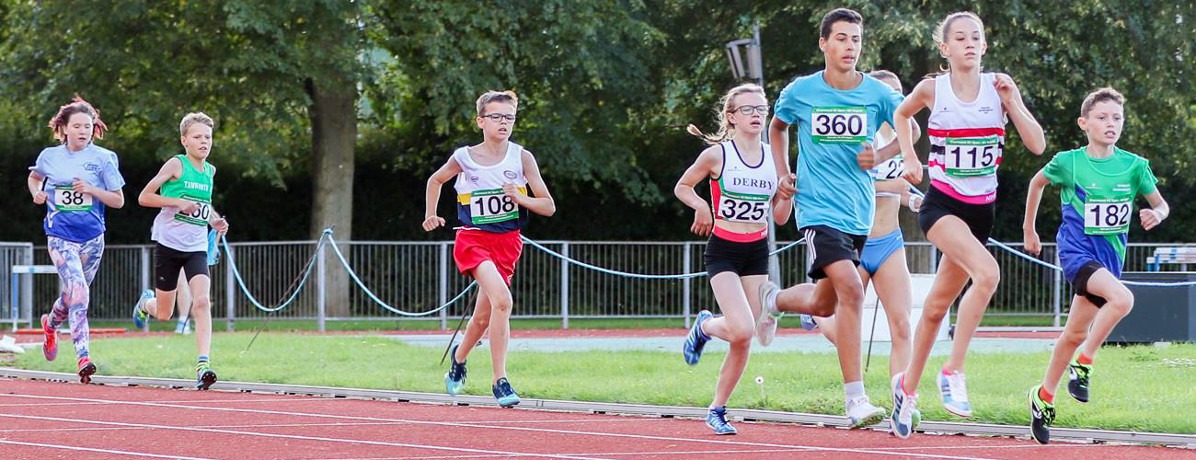 Getting ready for the Plusnet Yorkshire Marathon on Sunday 9th October 2016 I thought about the interview I had done with Sandy Poole in January that year. Sandy had been running for 7 years when she ran her first marathon and this is what she said about it:
Getting ready for the Plusnet Yorkshire Marathon on Sunday 9th October 2016 I thought about the interview I had done with Sandy Poole in January that year. Sandy had been running for 7 years when she ran her first marathon and this is what she said about it:
“My first marathon started because I was doing a half marathon. At the Robin Hood in 1993 I set off to do the half marathon, and went on and did the full marathon. I did say to the family, “If I feel good I’ll do another lap.” No training above 13 miles until then. I got up to 17 quite easily, and then I ran and jogged.”
It seems amazing to me that someone could turn up on the start line of a marathon and decide on the day to run twice as far as they had ever run before.
And now I found myself in a not dissimilar position. It’s true that I had run further than a half marathon. In March as part of my training for Milton Keynes Marathon I had run 17 miles, but that had been my longest ever run and my “long runs” in preparation for this marathon had consisted of two 7-mile runs in August and a 10.5-mile run and a 15-mile run/walk in September.
Sandy had told me that at the time of her first marathon she was racing every week. When she set out to run the Robin Hood she must have been a lot fitter than I was after 7 months of on/off running due to injury.
What made me decide to run?
In October 2015 I booked to run both Milton Keynes and Yorkshire in 2016. Having had to give up on Milton Keynes, I was reluctant to be another DNS (did not start). Over the summer I set myself various targets, for example that if I had run a certain distance four weeks before the Yorkshire marathon I would be OK to do it. These didn’t quite work out.
But despite not having recent miles in my legs I felt quite strong. I’d been working on building my strength, and had managed to fit in 6 small-group strength training sessions. I do yoga and some strength work at home and started going to a yoga class in September. Since July I’ve been a partner in a new business that involves selling at markets and this meant I’d had a lot of practice at standing for several hours. I think all these things contributed to building endurance.
In the last week of the summer holidays we went to Alicante for 5 nights. I managed to run on 6 days that week, covering 23 miles with over 1,600 feet of ascent. This gave me the confidence to believe I could go the distance.
And I had approval and encouragement from my sister Judith, who has been my running mentor since I bought my first pair of trainers in 2011.
Adapting my race strategy – “Jeffing”
It didn’t seem realistic to try to run the whole marathon, so I decided to run/walk it. I knew that this is a really popular approach to distance races in the US, particularly amongst older runners, and had heard of Jeff Galloway as the leading proponent of run/walking. Naively I thought that run/walking meant something like run for 30 minutes, walk for 5. I was perturbed when I consulted the calculator on Jeff Galloway’s website and it told me that I should be doing 60 seconds run/30 seconds walk. Could that really work? I started trying it two weeks before the race. I was surprised that I found it quite easy to get used to the rhythm. It did not feel too disruptive to keep changing pace, although I quickly realized that it didn’t make sense for me to start walking on a downhill. My 15-mile long run was a run/walk to Beeston parkrun on 24th September, where I had the strange experience of practising run/walking when running with other people. It felt a bit like cat and mouse at times. There were two ladies who I kept overtaking, then they would overtake me until eventually I got far enough ahead of them to stay ahead.
I found out that Jeff Galloway’s method is called “Jeffing” by runners who use it. I’d never heard of anyone in the UK using the method, but a US contact pointed me to a UK Facebook group of women who “Jeff”. I even found out there was another woman “Jeffing” the Yorkshire Marathon, although I didn’t see her on the day. It was reassuring to know that I was not the only person in the UK adopting this method.
Did it work on the day?

One of my walking intervals
I decided to aim for a 12-minute mile pace overall. This would be a 5 hour 14 minutes marathon. One of the benefits of this strategy was that it took all the pressure off me to do a time, and I was happy to say to my parents (who were coming to see me at around mile 18) that it might take me 5 and a half hours to complete the race. It also gave me confidence that I would finish and be consistent over the distance. I would not have had that confidence if I’d tried to run it.
I started near the back of the field, but I found that after about mile 9 I started overtaking other runners and very few went past me. It was hard to chat to people runners because of stopping to walk, but occasionally I broke my rhythm so that I could run with someone. One man I ran with for a while was doing intervals but his were 4 minutes run/1 minute walk.
I used my Garmin to time the intervals. I knew the battery would not last and it gave up around mile 18. After that I counted in twenties – 4×20 for run and 2×20 for walk. I suspect that some of the walk intervals got longer in the last 6 miles, as I was getting tired.
There’s a lovely downhill finish for the last 400m and they call out the runners’ names. I managed to pick up my pace for that.

Approaching the finish line
My time in the end? 5:19:08. I’m pleased I did it. Still don’t know if I want to do another one (but I am a bit tempted as I feel there is scope for a big PB).
My recovery was really good and I put that down to the run/walking and to that fact that I hadn’t undertaken a demanding training programme. I was also able to rest well as I was staying the night with my parents. The tiredness persisted for more than a week but by the Tuesday after the race I’d got to the point where I wasn’t aching and had started to forget that I’d run a marathon.
I love running in East Yorkshire and I’d recommend the marathon as it is on closed roads, well organized, with lots of support, and at the start you get to run through the centre of York and past the Minster.

Have you ever used run/walking in a race? Did it work well for you?
Jeff Galloway’s method is based upon using a mile time trial, repeated at intervals over a few weeks, to work out your run and walk paces. His website includes training plans for different race distances. The main principle behind his method is that walking intervals allow time for muscle recovery, reducing fatigue and injuries, and potentially improving performance.




Hi Katie, I really enjoyed your post and congrats on your marathon using t he run/walk method. I didn’t know it was called Jeffing but I have been working at getting back into running using this method of training. I have a niggly calf injury that won’t go away so I’m reluctant to do too much running all at once. This way seems to help and I’m cycling as well (which doesn’t impact on my calf at all). All the best to you!
Hi Debbie, thank you and it’s lovely to hear from you. I’ve just been enjoying having a look at your photos on your blog. I’m glad to hear that intervals are helping with your injury. It’s so important to do what’s right for you and your body. Katie
Hello Katie,
I have just come across this article and it fascinated me as I will be doing the same marathon as my first and will be jeffing it. I am new to jeffing and have previously straight-run two halfs but following a year of injuries I know it is unrealistic to even think of running the whole 26.2.
Did you use the 60:30 ratio for the whole run, or 80:40? And did you find it hard on your calf muscles and hamstrings to transition from walk to run to walk so frequently over such a long distance? Thank you.
Hello Ellie, like you I was new to jeffing but I didn’t find it difficult to adapt. I did use 60:30 seconds for the whole way, although my GPS battery gave up at about 15 miles so I had to count in my head after that which may not have very accurate, especially as I got more tired towards the end. I didn’t find it hard to transition between walking and running, and my recovery afterwards was better than I would have expected if I’d run the whole way. I usually run in races but I recently jeffed the Snake Lane 10 (miles) with my niece. We did 90:30 and that worked really well too. I think you have to find what you feel comfortable with. I’m doing the Yorkshire 10 miles this year – we could meet at the start! Katie
Hi,
Glad someone else is making the most of jeffing. It is my go to strategy for maras and ultras now. I have intervals set up on my watch to buzz at every KM and then I walk for 200m then run 800m. This keeps me fresh up to 50K with plenty in the tank for good finish line photos. I have 2 mins run 1 walk on my other watch if I am beaten though just in case.
Keep up the good work
Darren
Hi Darren, it’s good to hear about other people’s approaches to run/walking. I do think the recovery you get from walking is beneficial. I did my first ultra this month and think I might have benefitted from doing short intervals, rather than what I tried which was walking every 5 miles. Good luck with your next race! Katie